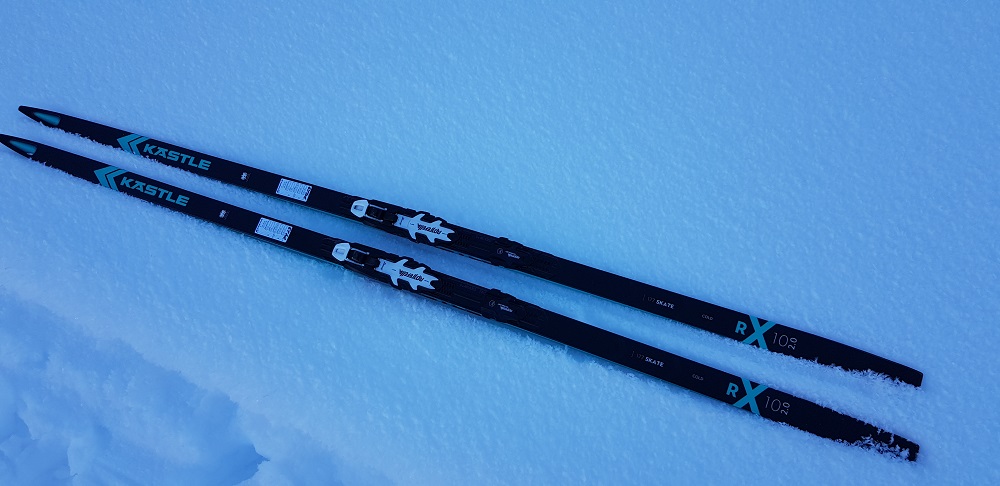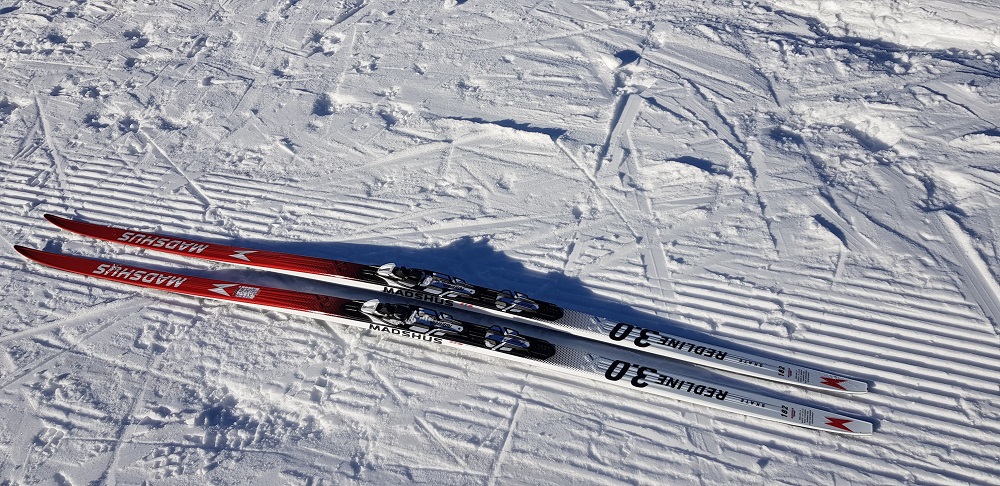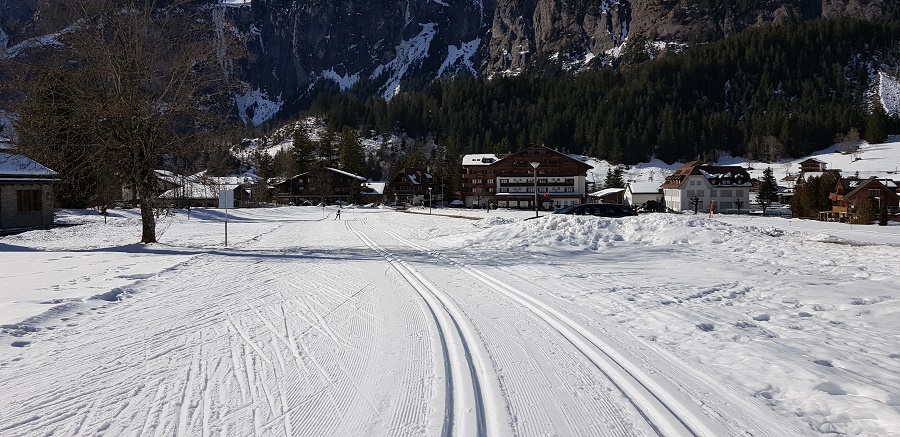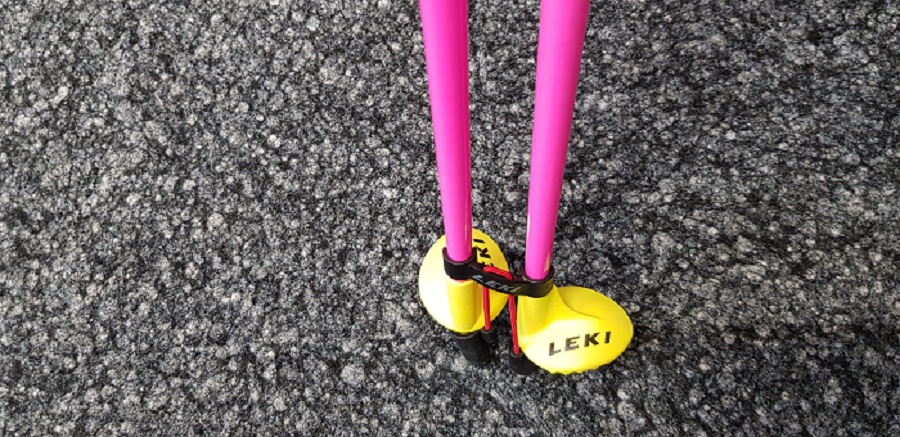- Home
- Equipment
A Guide to Choose Your Cross Country ski equipment?
So what is the best cross country ski equipment for racing to get you faster over the finish line?
To find out what cross country ski equipment you need, you have to know what technique you prefer- classic skiing or skate skiing or maybe even both.
For each xc ski technique you need different equipment. Today, many Masters XC ski competitors do only skating.
There are various reasons for it, but that’s another story. However, I believe that by using both the classic and skate ski technique for training and racing is a lot more fun.
There are certain guidelines to follow for sizing your cross country ski equipment. Here is an overview of what to look out for:
High Performance Skate Skis
A skate ski is mainly evaluated based on your weight. Skate skis have a single camber and should be between 100% and 130% of your body weight, depending on your experience and ability as a helping factor.
If you haven’t been skate skiing for that long, it’s easiest to use skis that are head high or just slightly taller. If you are a more experienced Nordic skier, you can go for longer skis. However, longer skis are a bit more difficult to control, but they are also slightly faster.
Classic Waxable Skis
A classic ski on the other hand is longer than a skating ski, usually about from your height to 25cm. They have a double camber and therefore when sizing new classic skis, your body weight is the most important.
A classic style XC ski base is split into 3 different zones. The kick zone, also called the grip zone in the middle under your foot. And the glide zones, which are at the tip and tail of the ski.
Since your body weight is the most important, you need to be heavy enough so that you get enough grip on the snow during your kick phase when you transfer your body weight.
At the same time, you also need to be light enough for the grip area of the ski to stay mostly off the snow when you glide.
If you are new to classic skiing, it’s an advantage to go for a shorter ski. However, depending on your technical skills and your xc ski goals, go for a longer classic ski.
In addition to waxable XC skis, there are also different types of waxless skis. They are classified corresponding to the type of material that is replacing the grip wax.
Classic Waxless Skis
Cross country ski equipment has changed a lot over the last few decades. Gone are the days when people had fiddle around with their wax because of difficult snow conditions. This especially the case in Central Europe where it isn't as cold as in some part of the USA, Canada or in Scandinavia.
Today there are a few options when training in the classic skiing style that will make things a bit easier, especially around those difficult conditions around the 0° degree celsius mark.
Skin Skis
Mohair is the type of material that is used on all skin skis. It is put into the middle section and angled backwards so that the Mohair strip inserted slides easily when the ski is gliding forward. As soon as you push down the ski, the Mohair sticks to the snow.
Zero Skis
A Zero ski, which is also called a “rub ski” has a rubber inlay in the grip zone. Before skiing, you have to prepare a zero ski by roughing up the hard rubber with sandpaper. Then you continue by applying a spray-on coating that prevents the grip surface stay rough while you ski.
Fishscales
Fishscale skis have a pattern imprinted into the grip base. Fish scale-patterned waxless skis are the most common waxless skis for recreational xc skiers with no intention to race.
However, they don’t work well in all snow conditions and don’t glide as well as waxable skis. For this reason, they aren’t suitable for xc ski racing.
Racing & Performance XC Ski Bindings
There are 4 different cross country ski binding system on the market:
- NNN®
- Turnamic®
- Prolink
- SNS
With
the NNN®,
Turnamic® and Prolink ski bindings, the
ski boots are all compatible. However, SNS bindings have their own unique
system and therefore are only compatible with SNS boots.
 credit: xcski
credit: xcskiAs you can see in the graphic above, the choice of boot is relatively free, as long as the binding system is fixed. You are also free to combine in the opposite direction.
However, there is an exception with the SNS standard binding. In cross country ski equipment bindings of this standard, which are built by Atomic and Salomon, only boot soles of this standard fit and vice versa.
With a little caution when buying boots and bindings, it’s also possible to ski in xc ski boots of your choice on your preferred cross country ski model.
XC Ski Boots
Just as with skate or classic skis, there are two different
types of boots for either skate or classic skiing. Just after ski skating finally was integrated into the world cup, the ski companies started to fabricate separate cross country ski equipment.
Skate Ski Boots
Skate ski boots have a more rigid out-sole with a higher cuff than classic ski boots. This helps you to lift your ski up and therefore reduces the possibility of torsion movement.
The high full carbon cuff in most race skating boots is shaped to match the natural contours of the foot. This provides maximum stability and power transmission.
Classic Ski BootsClassic ski boots on the other hand have a softer outsole, which improves your forefoot flexion. They have lower cuffs for a greater range of movement.
The soft outsole helps you with the forefoot flexion, which is an advantage in today’s double technique. The boot is also looser around the ankle.
Cross Country Ski Racing Poles
How long should my cross country ski poles be?
The length of your cross country ski poles depends primarily on the technique used and your level of performance. Basically, your poles for the skating technique should be about 10 cm (4 inches) longer than those for the classic technique.
You can precisely calculate your individually suitable pole length with the following formula:
Body size (in cm or inches) x 0.85=classic pole length
Body size (in cm or inches) x 0.90=skating pole length
Here is an example: My height is 179cm (about 70.47in) and according to the above formula, the pole length for classic skiing should be 152cm (59.90in). So this is the actual the pole length I always use.
For the skating ski technique, the recommendation according to my body size should be 161cm (63.38in). However, for skating I use longer poles than recommended, usually 165cm (64.96in). But that depends entirely on the snow conditions.
The Complete Cross Country Ski Equipment List
Now that you know what to look out for when acquiring the perfect cross country ski equipment, there is only one thing missing and that is Nordic ski clothing such as:
- Warming-up Jacket and pants that go with it
- Gloves with enough freedom of movement for good grip on the ski poles
- Hat or a headband, depending on the actual temperature
- Ski glasses that protect you from UV radiation
- Hip bag, and
- If you are a Masters xc ski racer, you should
get a racing suit. And even if you are a Master skier at an advanced age, I still recommend you get a two-piece racing suit.
- Home
- Equipment














